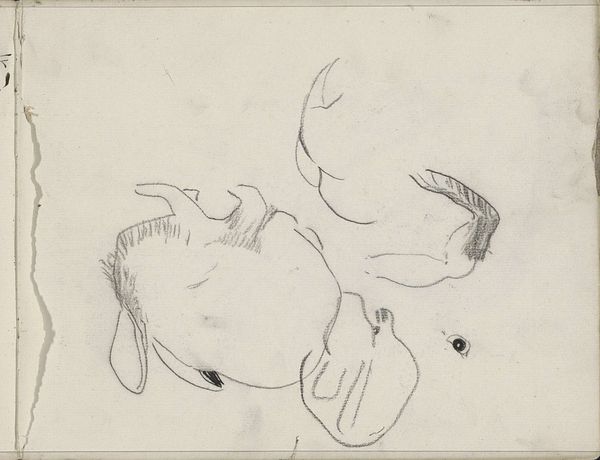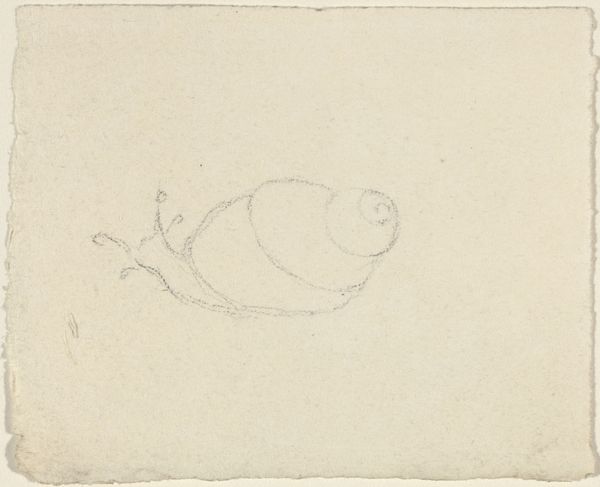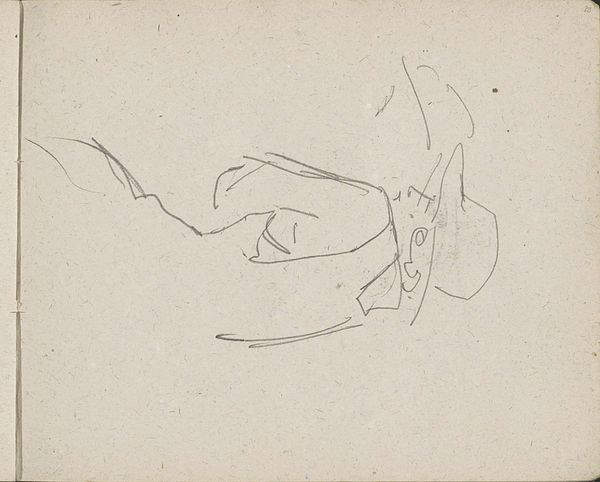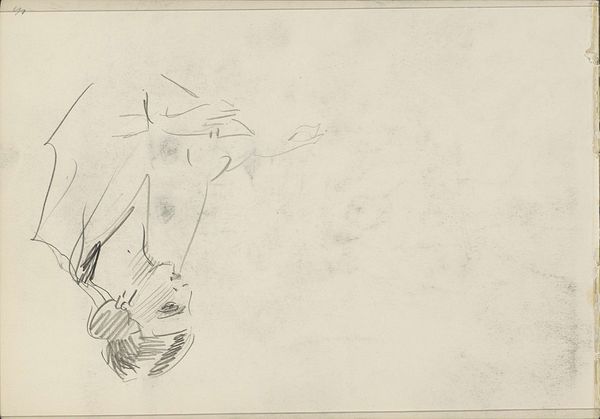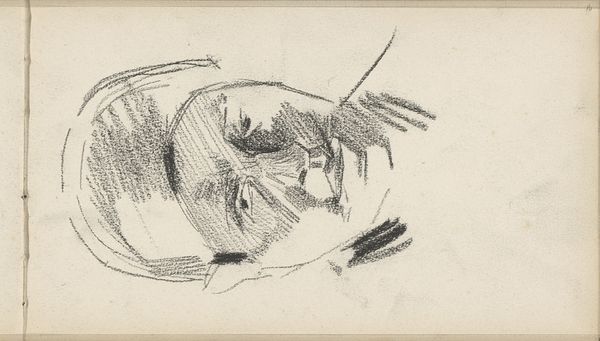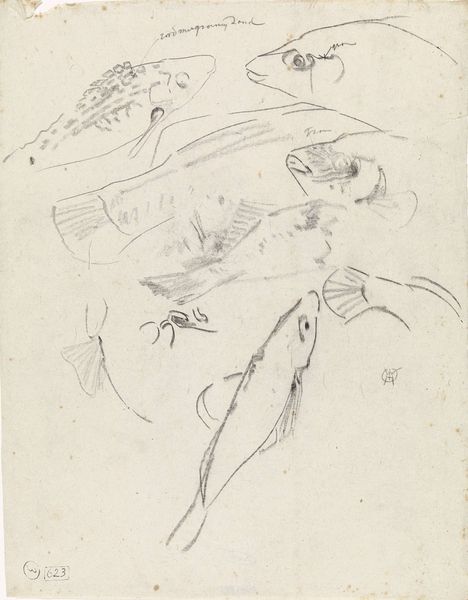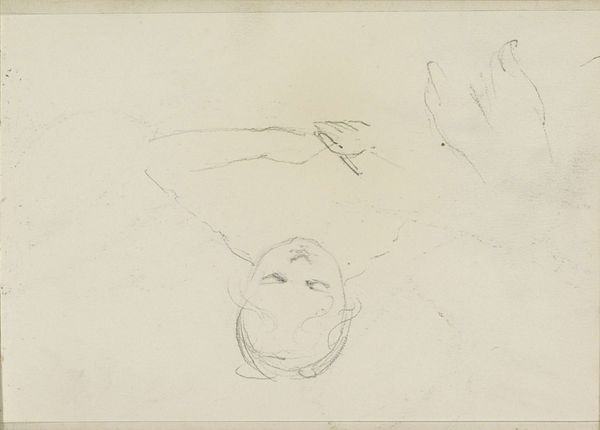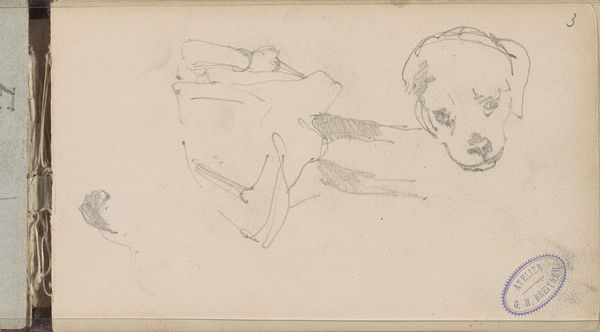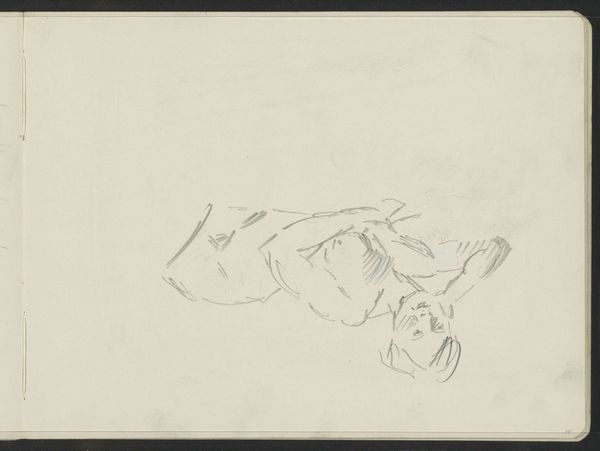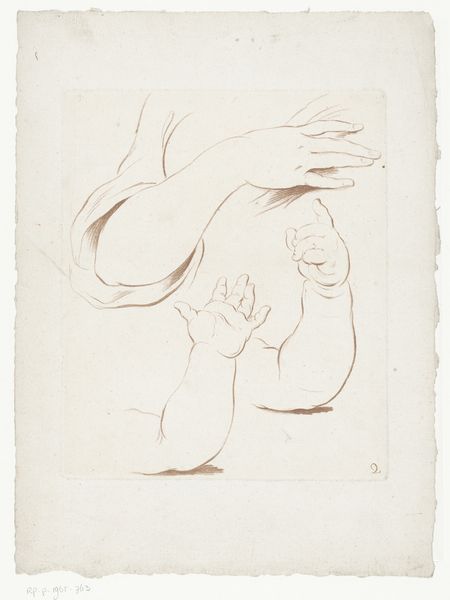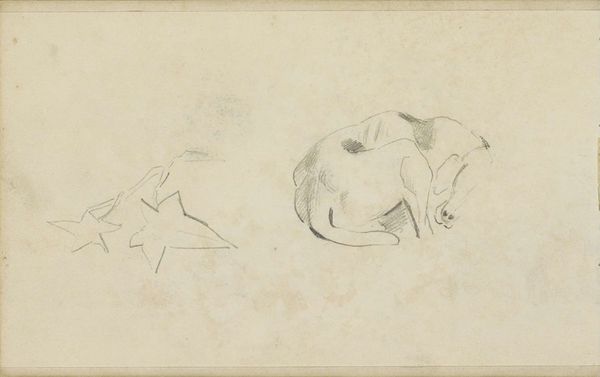![Falling Male Nude [verso] by John Singer Sargent](/_next/image?url=https%3A%2F%2Fd2w8kbdekdi1gv.cloudfront.net%2FeyJidWNrZXQiOiAiYXJ0ZXJhLWltYWdlcy1idWNrZXQiLCAia2V5IjogImFydHdvcmtzL2JjOTI4MDg2LWIyNjItNGVhMi05ZjczLTVmZDg0MGFmOWIzYS9iYzkyODA4Ni1iMjYyLTRlYTItOWY3My01ZmQ4NDBhZjliM2FfZnVsbC5qcGciLCAiZWRpdHMiOiB7InJlc2l6ZSI6IHsid2lkdGgiOiAxOTIwLCAiaGVpZ2h0IjogMTkyMCwgImZpdCI6ICJpbnNpZGUifX19&w=3840&q=75)
drawing, pencil
#
drawing
#
pencil sketch
#
figuration
#
pencil
#
nude
Dimensions: sheet: 47.63 × 62.23 cm (18 3/4 × 24 1/2 in.)
Copyright: National Gallery of Art: CC0 1.0
Curator: John Singer Sargent's "Falling Male Nude [verso]" from 1918-1919, is rendered with a delicate, almost fleeting quality in pencil on paper. Editor: My initial reaction? A sense of vulnerability. He’s suspended, like he’s just lost his footing and time is stretching as he’s falling. Or floating. Curator: That's an interesting point. Considering the historical context, the end of World War I, one could read this "falling" as a metaphor for the societal and personal disruptions of that era. The male nude, historically a symbol of strength, here appears destabilized. What does that represent within evolving concepts of masculinity? Editor: Huh, I was too caught up in the pose itself to consider the war. Now I can't unsee it! The sketchiness even enhances that sense of… fragility. Almost like a memory fading. Sargent captured that beautifully, the ambiguity. It's the pose, really, it’s as if he’s willingly letting go, embracing the void. Curator: Indeed. And note the verso indication. The "back" side of something. Is this a concealed narrative, a side of masculinity rarely shown? Perhaps it speaks to hidden emotional realities amidst wartime machismo. The economic shifts affected class dynamics impacting norms and challenging traditional gender roles. Editor: Maybe it's a rejected sketch and this sense of imperfection adds to its raw emotional punch, a honesty often absent in polished works. It allows us to fill in the emotional gaps, to experience the figure's struggle. Curator: And by looking at that tension and by interpreting these emotional complexities can lead to the reevaluation of masculinity not only in art historical discourse, but within contemporary social justice. It opens the dialogue to ask pertinent questions: Who has permission to represent these figures? How can one artist reclaim visual vocabularies of oppression to explore narratives of healing, for instance? Editor: I still like my idea better… But okay, it is kinda profound, actually. It forces me to rethink simple definitions of strength versus vulnerability, power versus helplessness… I keep going back to that arm, reaching for… nothing? Something? Curator: The questions it evokes are its strength. It's a sketch that demands we acknowledge and grapple with history's persistent ripples on human experience. Editor: Absolutely! It makes me see the space between the lines, the stories behind the visible. So many ways to fall.
Comments
No comments
Be the first to comment and join the conversation on the ultimate creative platform.

